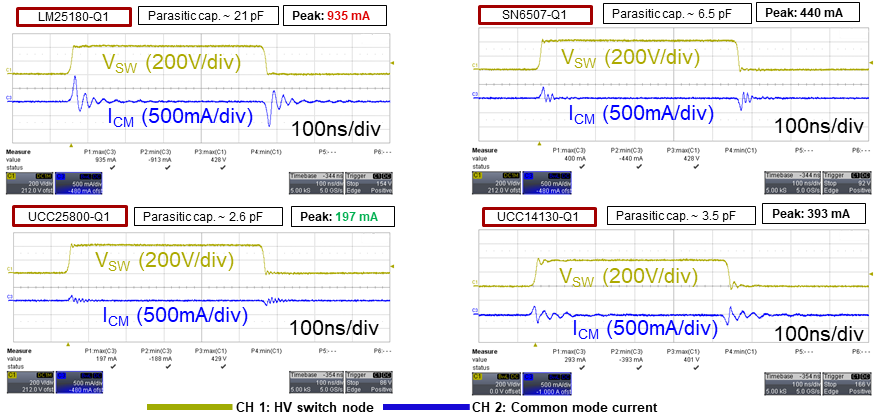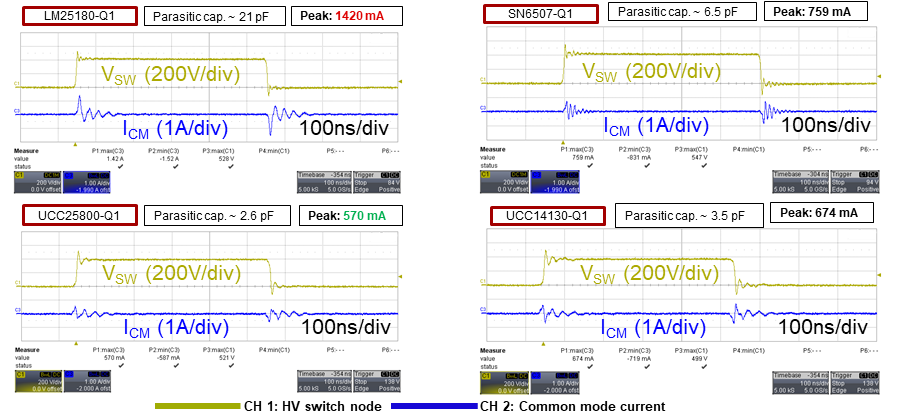TIDT382 February 2024
- 1
- Description
- Features
- Applications
- 1Test Prerequisites
- 2Testing and Results
- 3Waveforms
- 4Summary
- 5References
2.5.5 Common-Mode Current Comparison
The CMI comparison waveforms of the four topologies are illustrated in the following images.

Channel 1: HV switch node,
[scale: 200V/div, 100ns/div]
Channel 3: CMI current, [scale: 500mA/div, 100ns/div]
Figure 2-24 Common-Mode Current Comparison
at 40V/ns Slew RateChannel 3: CMI current, [scale: 500mA/div, 100ns/div]

Channel 1: HV switch node,
[scale: 200V/div, 100ns/div]
Channel 3: CMI current, [scale: 1A/div, 100ns/div]
Figure 2-25 Common-Mode Current Comparison
at 100V/ns Slew RateChannel 3: CMI current, [scale: 1A/div, 100ns/div]